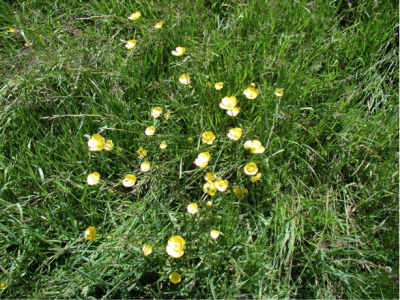What are some of the characteristics of weeds?

Weeds are fast growers, sturdy and hard to get rid of Although some are known to be toxic, they have multiple uses. Let's look at a few of them this week.
Unwanted nuisance
A weed is a plant which is generally considered to be an unwanted nuisance, particularly in farms, gardens, etc. Weeds grow and spread very fast are very hardy and difficult to get rid of, and can survive in the most adverse conditions.
There are many commonly known weeds, such as the dandelion, goldenrod, ragweed, bulrush, arrowhead, milkweed, Indian goose grass, dodder, amaranth, etc. Many of these are well known by other Indian names in history, folklore and literature.
Since weeds are very fast growers and sturdy survivors, they draw nutrition away from crop plants. Further, seeds of weeds have the ability to remain dormant in the soil for very long, growing back with the next crop or the rains. Dodder or 'amarbel' as known in India, for example, is a vicious weed: it spreads relentlessly, showing an uncanny ability to attach itself onto the crop plant towards which it grows. What is more, dodder has an eerie sense of preference for certain plants over others. It prefers tomatoes, for example, over wheat, and propels itself towards such plants.
Apart from interfering with the crop, many weeds are also seen to be harmful or poisonous. The giant milkweed or 'arka' as it is known in India, with faint white or purple flowers, is known to be toxic to the eyes.
'Datura' with the elongated white flowers is known to be toxic, and has been used across cultures as a poison.
'Parthenium' is a plant with thin stems and small white button-like flowers, of the Asteraceae family (like the flower aster). Parthenium is known to be toxic to both humans and animals.
They are useful too!
Many of these weeds have a multitude of uses across various cultures, including India.
A weed can be used as a prickly border to crop fields (the abundant shrub Lantana camara makes excellent fencing material), or as ropes to tie up bundles, make baskets, etc.
Any weed, when cut and left in the field, makes excellent compost or manure. Dandelion with the little yellow flowers, for example, helps crops grow better by breaking up the hard layer of soil known as 'hardpan' that forms in fields after too much cultivation.
Yet other weeds are useful as pest repellants. Ocimumcanum for example, is collected and added to grains during storage to reduce pests. Others such as Calotropis gigantea and Argemone mexicana are used to make antifeedant sprays just like neem leaves.
A number of weeds are also famous as 'holy' plants. The flowers of globe amaranth, the bluebell, or thumba with the little white flowers and others are offered to Gods. 'Arka' is used to make garlands for Lord Ganesha.
Many weeds also make excellent livestock feed. In Ayurveda, weeds are often used as medicine and food supplements. In olden times, the poor who could not afford nutritious food or milk would soak grass or 'durva' overnight in water, and give the water to their children the next day as a nutrition supplement. Cats and dogs are often seen munching on blades of grass on lawns when they have an upset stomach. Ganaki sopu of the tomato family is fodder to the cow and medicine for the humans.
Picture Credit : Google